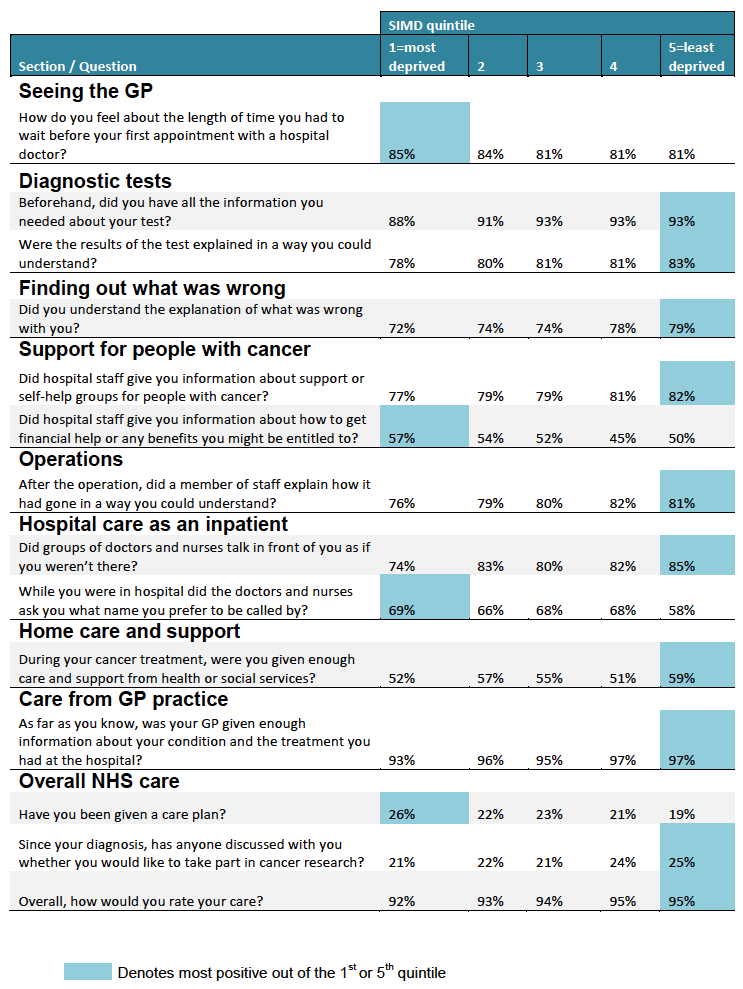Scottish Cancer Patient Experience Survey 2015/16
Results from the 2015/16 Scottish Cancer Patient Experience Survey. The survey covers the full care journey that a cancer patient experiences, from thinking that something might be wrong with them to the support they received after their acute-care treatm
Differences in experiences between most and least deprived areas
The social causes of health inequalities are often deep rooted and complex, with socio-economic position being based on multiple factors, including educational level, employment status, housing situation, and skills training.
Residing in a deprived area is associated with unfavourable health outcomes of residents across the full clinical course of cancer, from the stage at diagnosis through to survival [7] . This can be linked to a range of possible reasons, such as: variations in cancer incidence and prevalence across the deprivation categories in Scotland; literacy or language challenges to information comprehension; or differences in uptake of treatments.
Analysis was conducted to investigate whether patients' responses varied depending on how deprived the area they lived in was. The Scottish Index of Multiple Deprivation ( SIMD) [8] was used as the measure of deprivation, with survey respondents assigned to one of five SIMD quintiles ( SIMD 1 being the most deprived and SIMD 5 the least deprived).
Fifty questions in the survey had response options that could be categorised as either positive or negative (annex ref). For each of these questions, the percentage responding positively in the most-deprived SIMD quintile and in the least deprived SIMD quintile were compared to see if they were different to a statistically significant degree.
Fourteen of the fifty were significantly different. In the majority of cases (10/14), patients from the least deprived areas were more positive (Table 54).
One particular topic on which those in the least deprived areas reported more positive experiences related to patients receiving explanations in a way that they could understand. Three of the ten questions where patients from the least deprived areas were significantly more positive related to this (Table 54).
Questions where patients from the most deprived areas responded more positively included whether hospital staff had provided information about how to get financial help and benefits (57% vs 50%), and whether the patient had been provided a care plan (26% vs 19%).
Table 54: Significant differences in % positive response between most and least deprived SIMD quintiles

Contact
There is a problem
Thanks for your feedback